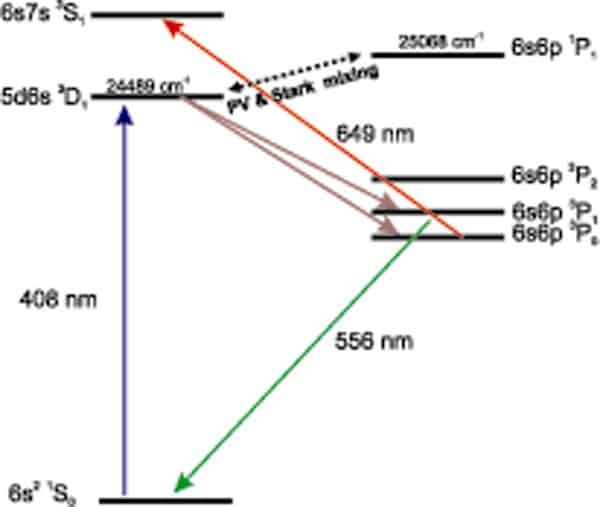
Physicists in the US have detected the largest atomic parity violation ever seen, in a ytterbium atom — 100 times greater than the largest effect to date observed in caesium atoms. With further work, the results could shed new light on the way neutrons are distributed in nuclei, which would help physicists understand how weak interactions work within the nucleus.
Parity is the quantum mechanical transformation that flips the spatial co-ordinates of an object in 3D space. If a particle violates parity, its mirror image would behave differently and such particles can be described as right or left “handed”. The weak force violates parity by only acting on left-handed particles, leaving the right-handed ones untouched.
An historic violation
The theory of parity violation was first formulated in the mid 1950s by Chen Ning Yang and Tsung Dao Lee, who shared the 1957 Nobel Prize for Physics for their efforts. Although it was first observed experimentally by studying how electrons are emitted by radioactive cobalt nuclei in the presence of a strong magnetic field by Chien-Shiung Wu at Columbia University.
It was not until the 1970s that French physicist Marie-Anne Bouchiat and her husband Claude realized that the size of the effect would increase with the cube of the atomic number, which suggested that parity violation should be easier to detect in heavier atoms. The largest and most accurate effect to date was detected by a group led by Carl Wieman at the University of Colorado at Boulder in 1997 in caesium with an accuracy of 0.3%.
Now, Dmitry Budker and colleagues at the University of California, Berkeley have designed an experiment that exposes a beam of ytterbium atoms to perpendicular magnetic and electric fields. The field configuration sets the handedness of the experiment and a laser beam is used to excite the atoms’ electrons from the ground “singlet-S” state to the first excited “triplet-D” state. The team measured the excitation rate and found that with a left-handed field configuration, the atoms made the transition more often than with the right-handed configuration. Parity violation arises due to the weak force mixing the upper electronic energy state of the transition with a close-by state of opposite parity, (see diagram).
To ensure that it was parity violation being observed, the Berkeley researchers deliberately chose this “forbidden”, or highly unlikely, transition to eliminate other electromagnetic effects that would have been present in a more common transition. The team also managed to enhance the parity violation effect as a result of the applied electric field, which also mixes the opposite-parity states as a result of “Stark interference”, allowing the Yb atom to undergo the forbidden transition. The interference of the two types of mixing enabled the team to boost the effect they were looking for.
Beyond the standard model?
At the moment the results are not terribly accurate with an overall uncertainty of 14% but the team is working to improve on this. “This is enough to establish unambiguously that the effect is there and it is large,” says Budker. “The important point is that we start to probe nuclear weak interactions once we cross the 1% accuracy level in Yb, which we are very optimistic about,” he added.
A long-term goal is to use parity violation as a tool to look for new physics beyond the Standard Model. However, more immediate motivations include determining the distribution of neutrons within the nucleus, something that is hard to do with conventional methods due to neutrons’ lack of charge. This should confirm or dispel the “neutron skin” models which predict that the protons are surrounded by a slightly larger layer of neutrons.
Budker also hopes that the experiments might eventually reveal “anapole moments” which have so far only been seen in caesium. Anapole moments are associated with electric currents induced by the weak interaction which circulate within the nucleus like the currents inside a tokamak.
This research has been published on the arXiv preprint server.



